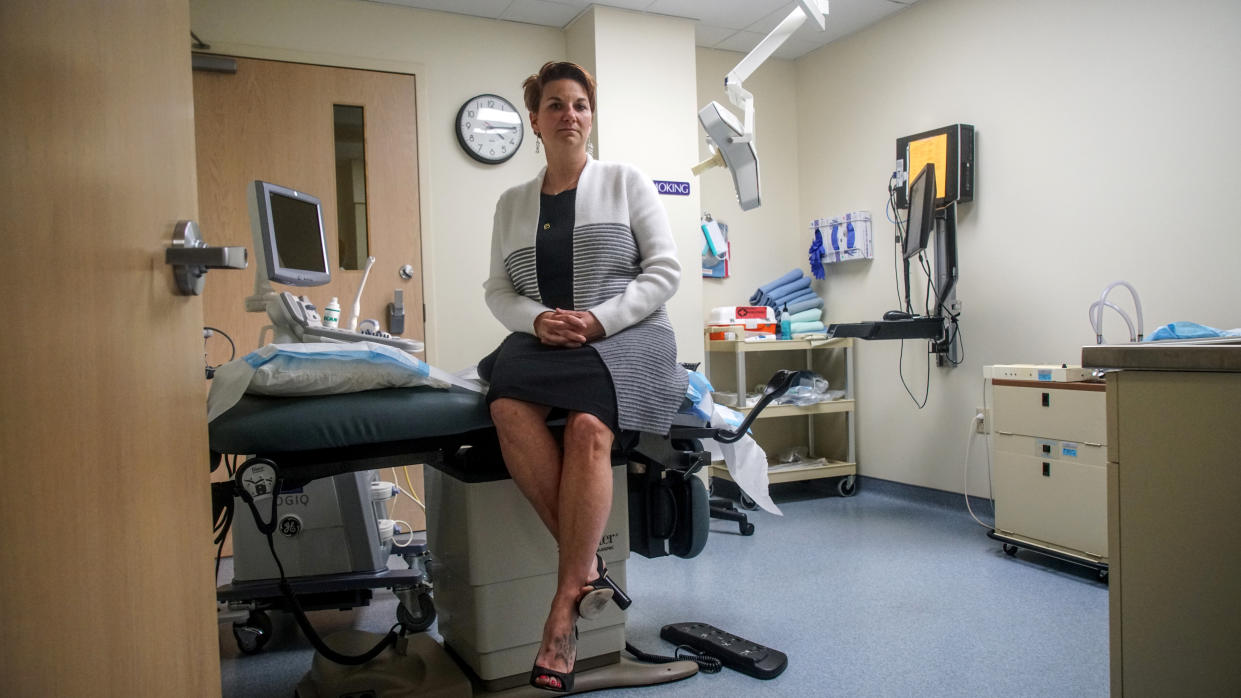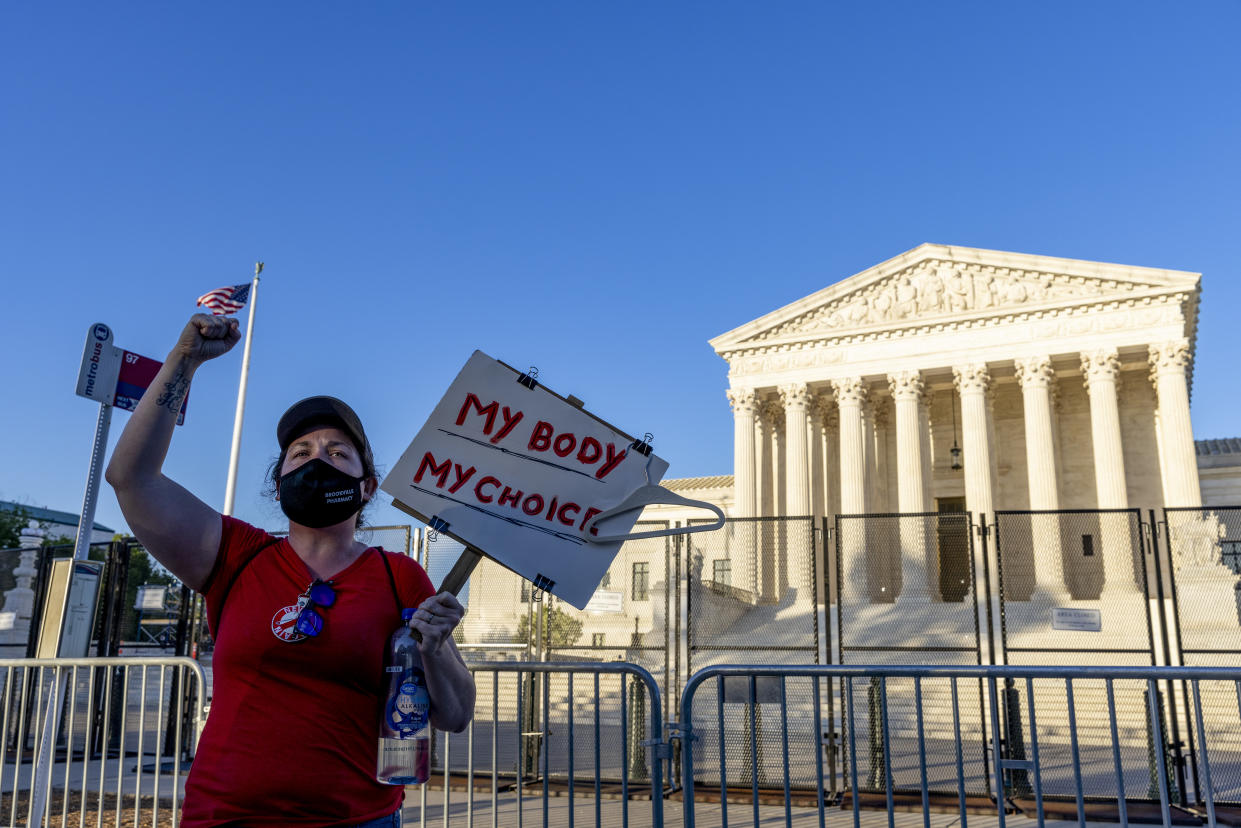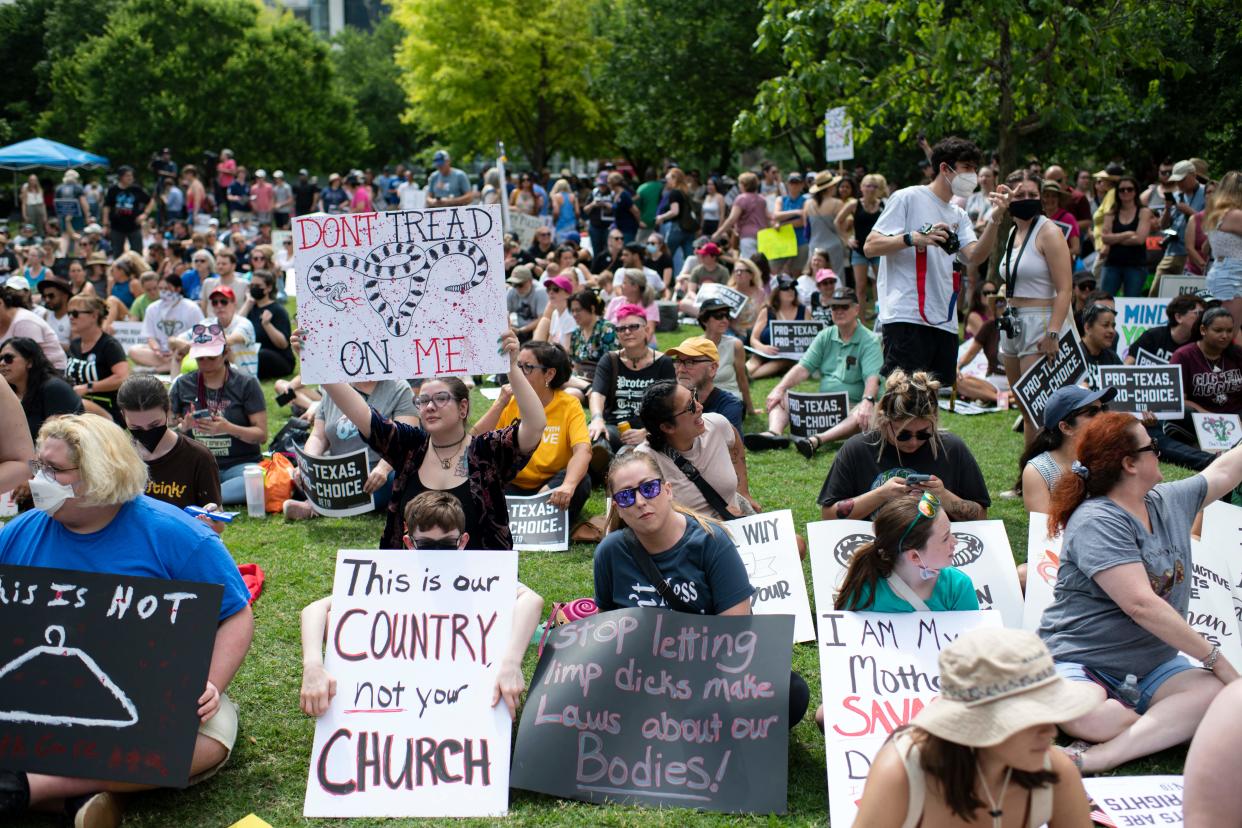A post-Roe 'catastrophe' looms for abortion providers
A single word is all it takes for Dr. Colleen McNicholas, the last abortion provider in Missouri, to describe a future without Roe v. Wade, the 1973 ruling that legalized abortion nationwide, which is poised to be struck down by the Supreme Court: “Catastrophe.”
As the medical director of Planned Parenthood of the St. Louis Region and Southwest Missouri, McNicholas has seen the ripple effects of S.B. 8, the law Texas passed last year that rendered abortion illegal after a fetal heartbeat could be detected, usually halfway through the first trimester.

The new restrictions pushed Texas women to seek abortions in neighboring states, limiting access for women there. “It caused a ripple effect,” National Abortion Foundation policy director Melissa Fowler told Yahoo News, a logistical nightmare that, abortion providers say, was precisely the point of such legislation.
Meanwhile, many other states across the Midwest and Southeast had taken their own steps over the years to make it more difficult for abortion providers to stay open. “Our opponents have been creative,” Fowler says. “All of this has been part of a strategy.”
McNicholas saw firsthand how S.B. 8 created a regional crisis, a likely portent for the rest of the country in a post-Roe world. “As Texas implemented its six-week ban, that meant that nearly all of the folks looking for an abortion were going to be pushed out of Texas,” McNicholas told Yahoo News in a phone interview. “The problem is that all the states around Texas — they’re all already restricted-access states. They’re already one- or two-clinic states.”
There are now six such states — including Missouri. Missouri once had five abortion clinics. Today, only the Planned Parenthood in St. Louis remains, the culmination of activism that sought a repeal of Roe but also focused on more immediate, and local, goals.
A defiantly large blue banner graces a side of the nondescript building where McNicholas works under heavy security.
“Still here,” the banner says.

Across the country, anti-abortion activists persuaded state legislatures to pass targeted regulation of abortion providers, or TRAP, laws. Abortion providers had to seek admission privileges at local hospitals. Clinics had to adhere to ambulatory care standards and face penalties if, for example, their hallways were deemed too narrow.
And a federal judiciary — including the Supreme Court — that was filling up with conservative Trump appointees indicated that those new laws would survive legal challenges.
There was only one Trump appointee on the Supreme Court when it declined to hear a challenge to the 2015 TRAP law in Arkansas, effectively leaving it in place. Since then, two more Trump appointees have made the Supreme Court even more conservative, and ever more willing to take on Roe itself.
The potential reversal of Roe could occur in a landscape in which abortion providers are not only more regulated but also becoming more sparse. There were 2,042 abortion providers in the United States in 1995, according to the Guttmacher Institute, an abortion rights research group. By 2017, that number had fallen to 808.
The scarcity creates untenable waiting periods. “We are seeing and hearing from patients that some of those clinics are at four-, five- and six-week waiting periods. And the truth is, we know that abortion is a time-sensitive service,” McNicholas said.
The most restrictive bans, like the six-week one in Texas, go into effect right around the time, on average, when a woman learns she is pregnant. Anti-abortion activists have relied on advances in obstetrics to argue that the embryo, then the size of a seed, is a living person. Abortion rights activists maintain that the only purpose of such arguments is to make it more difficult for women to have an abortion, or to discourage them altogether.

The Texas law meant that some women seeking abortions in the state — where roughly 50,000 to 55,000 people had abortions each year from 2014 to 2021, according to the Texas Tribune — had to go elsewhere.
“So as the Texans are filling the schedules of the Oklahoma clinics, now Oklahomans need a place to go,” McNicholas said of the regional strain. Oklahoma passed its own six-week ban earlier this month.
Because of the state’s trigger laws, Oklahoma’s four clinics will automatically close if Roe is struck down. “The clinic system in this region, it’s just not robust enough to take the loss of so many clinics,” a spokesperson for a regional abortion provider told CNBC.
The shortage is the point, McNicholas said. “For some folks, it pushes them beyond the limits of abortion access.”
But experts say that women determined to have an abortion will find a way to do so, potentially using unsafe methods or relying on inept care.
“We’ve learned a lot from the experience of Texas,” Fowler of the National Abortion Federation said, describing a network of providers, activists and supporters ready to mobilize for a post-Roe world. “The infrastructure is in place,” she said. “And we’ve been doing this for years.”
